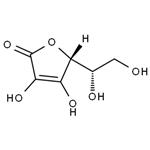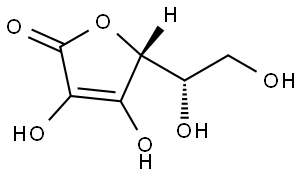Photoprotection of Human Skin by Vitamin C
Mar 3,2022
Several studies investigated the photoprotective effects of topical vitamin C (ascorbic acid). Using a porcine skin model and applying 15% vitamin C in an aqueous solution adjusted to pH 3.2 with the help of semi-occlusive patches, vitamin C significantly protected from UVB-induced erythema and sunburn cell formation.
In a human study, however, a lower concentrated hydro-alcoholic lotion with 5% vitamin C did not induce any significant photoprotective effects when applied once 30 minutes before irradiation at a dose of 2 mg cm−2. Besides differences between pig and human skin responses, differences in vitamin C concentration, amount of formulation applied, vehicle composition as well as other experimental parameters may explain this difference in photoprotective efficacy of the vitamin C formulations. Vitamin C is easily degraded by oxidation, which makes the development of a stable formulation challenging. Vitamin C can be stabilized in an aqueous formulation at low pH and under oxygen exclusion. Or, as described more recently, vitamin C can be kept stable in appropriate water-free, silicon-based vehicles.
Alternatively, esterified vitamin C derivatives such as magnesium or sodium ascorbyl phosphate, aminopropyl ascorbyl phosphate, and tetrahexyldecyl ascorbate (tetra-isopalmitate ascorbate) are stable and therefore promising alternatives to vitamin C.
However, as described for vitamin E esters, these esters must be hydrolyzed to vitamin C to manifest antioxidant properties. In addition, some of those derivatives (e.g., tetrahexyldecyl ascorbate) are of significant higher molecular weight compared to vitamin C, which will affect their skin permeability. Vitamin C does not act as a sunscreen, nor does it absorb UVA. In addition to its antioxidant properties, vitamin C participates in the formation of collagen as a co-factor of prolyl and lysyl hydroxylase, enzymes essential for the stabilizing and cross-linking of newly-formed collagen molecules. In humans, a six month use of a 5% vitamin C cream resulted in significantly improved skin relief and a decrease in deep furrows compared to placebo.
- Related articles
- Related Qustion
- Too much vitamin C: Is it harmful? Aug 28, 2024
Vitamin C, also known as L-ascorbic acid, is a water-soluble vitamin that is naturally present in some foods, added to others, and available as a dietary supplement.
- What are the diseases treated by Ascorbic Acid? Jan 11, 2024
Ascorbic Acid, also known as Vitamin C, is a water-soluble antioxidant found in a variety of fruits and vegetables.
- Ascorbic acid (Vitamin C) for Skin Dec 5, 2022
Ascorbic acid, also known as vitamin C, may help slow early skin aging, prevent sun damage, and improve the appearance of wrinkles, dark spots, and acne.
The photoprotective effects of vitamin E (α-tocopherol) have been studied extensively. Whereas most studies have been performed in animals, several studies exist investigating the photoprotective effects of topically applied vitamin E also....
Mar 3,2022Vitamins and Minerals medicinesEpicatechin gallate (ECG) is a flavan-3-ol, a type of flavonoid, present in green tea. It is also reported in buckwheat and in grape. The tea component epicatechin gallate is being researched because in vitro experiments.....
Mar 3,2022Plant extractsAscorbic Acid
50-81-7You may like
- L(+)-Ascorbic acid
-

- 2025-11-25
- CAS:50-81-7
- Min. Order:
- Purity: 0.99
- Supply Ability:
- Ascorbic Acid
-

- $10.00 / 25Kg
- 2025-11-25
- CAS:50-81-7
- Min. Order: 1Kg
- Purity: 98%
- Supply Ability: 10000 tons
- L-Ascorbic Acid (Vitamin C)
-

- $3.80 / 500kg
- 2025-11-25
- CAS:50-81-7
- Min. Order: 1000kg
- Purity: ≥99.8% (Pharmaceutical Grade) / ≥99.0% (Food Grade)
- Supply Ability: 1000 tons





